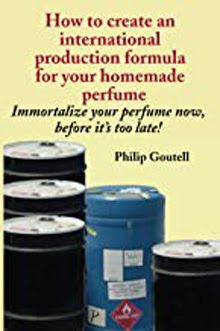Tuesday, June 2, 2020
Weighing your drops can get messy
I've been writing about a new perfume I'm developing. I've posted some pictures of the tools I'm using here. In describing the project I explained how I was working with dropper bottles and I claimed that by weighing out the drops in grams I could translate my formula into percentages. I mentioned that, like it or not, I would always weigh out a second bottle to confirm the weights from the first bottle. In this case I weighed out three bottles and have compared the numbers. I've posted the numbers here.
When you look at the numbers in my Exhibit A, you'll see that none of the weights are an exact match from bottle to bottle. For the aroma materials used in a smaller amount, the weights are close. For the aroma materials used in larger amounts, there is more deviation. For example, the three weights for "Tonk" are 5.950, 5.405, and 5.606. So what weight do I go with? Here's where it gets messy.
What I want is simple. I want to write out my formula in percentages. Once I have this I can easily scale up for any amount of production -- kilos, gallons, drums, or whatever. I can also send my formula out to a fragrance house and have them put it together for me, in any amount I require. But right now I'm looking at some messy numbers. The weights from A, B, and C don't quite match. Here's how I handle this.
To start, I've taken an average of each of these weights and see if these numbers give me something practical to work with. As it is, the averages look workable. Remember, these measurements are in grams so the difference between 5.950 (the heaviest "A" weight) and 5.6 (the average for three tries) is just 0.35 gram (35 hundredths of a gram!)
In Exhibit B, I've calculated percentages for each of my seven aroma materials. Ideally, when added, the percentages should total 100. Everything, together, really amounts to 100 percent, even if my numbers do not. But in the real world, as in my example, the sum will always be slightly off but I can work with my "99 percent" numbers. Although the sum of the percentages for A, B, and C (0.9952, 0.9996, 0.9995) are each closer to 100 than the sum of my averages, I'll go with the sum of the averages -- 0.9913. We're looking at a very small discrepancy.
One point now may shock you. After all this weighing and jiggling numbers, when I get ready to go into production, I'll use the contents of all three bottles, A, B, and C. In fact, I'll just mix them together.
This fragrance will be 7-1/2 percent oil to 92-1/2 percent alcohol and water (a light fragrance) so the three bottles together should give me enough oil to produce about 18 or 20 bottles of finished fragrance. If sales take off, I'll send the formula to my friends in Bangkok and have them make more for me, perhaps a kilo. This would allow me to produce a bit over 12 kilos of finished fragrance.
Subscribe to:
Post Comments (Atom)


No comments:
Post a Comment